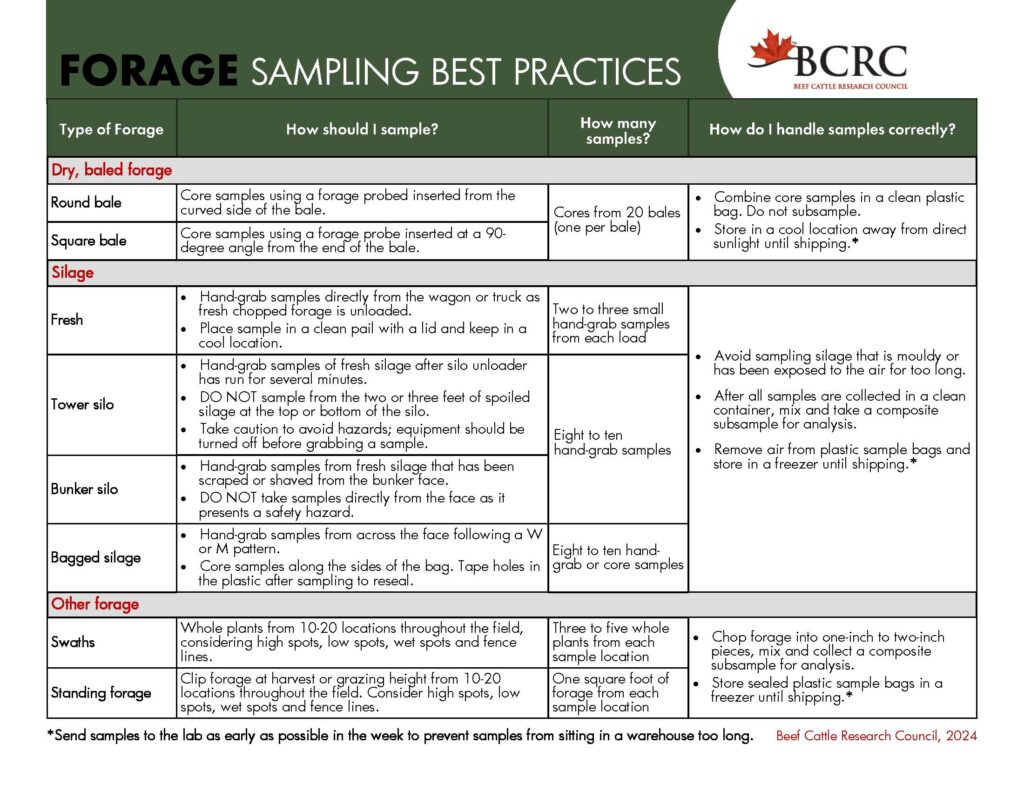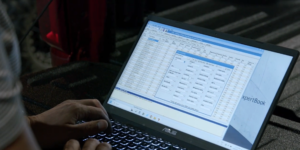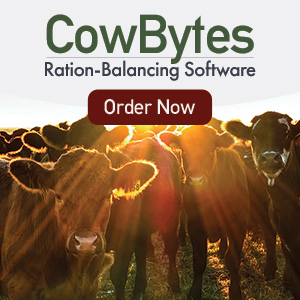Let CowBytes Simplify Your Feed Rations▶️
Collecting and sending feed samples for testing, analyzing the results and using the data to balance rations for beef cattle takes time, but the payoff is worth it.
Each feed included in cattle rations provides different nutrients, with each nutrient fulfilling specific roles in cattle growth, maintenance and reproductive health. Understanding the nutrients each of these ingredients provides and balancing nutrient costs with the intended management objectives is key.
In the following video, Russell Gallelli of Bar GB Land & Cattle and Dr. Tommy Ware with Veterinary Agri-Health Services highlight the importance of using feed testing and CowBytes ration-balancing software as management tools to optimize herd performance and overall farm profitability.
A Feed Test Result is Only as Good as the Sample Collected
Forages are the foundation of most cattle feeding programs and are economical sources of nutrients. However, feed quality and mineral content can vary widely, which directly impacts animal performance, growth, reproduction and profitability.
Visual assessment of feedstuffs is not an accurate measure of quality and may lead to cows being underfed and losing body condition. Feed sampling and testing ensures cattle nutrient requirements are met. However, a feed test result is only as good as the sample collected for analysis.
Here are some best practices to follow when collecting a forage sample:
- Group forages to be sampled into lots. These lots can be based on forage maturity, variety, harvest date, a single field or a single cutting.
- Sample at the right time. Collect samples as close to feed out as possible.
- Use the right tools. Ensure you are using the recommended tools for the feed type being sampled.
- Sample at random. When sampling, do not avoid bales that appear below average or areas in a field with poor forage cover.
- Allow time for sample turnaround. Allow a minimum two-week turnaround between sample collection and feed out.
- Label samples properly. Clearly label sample bags.
- Use the test results. Input feed analysis results into a ration-balancing software such as CowBytes.
It is critical to collect a feed sample that is representative of the feed ingredient you are testing. For round hay bales, this means collecting a sample using a forage probe from the rounded side of the bale, which allows the probe to pass through multiple layers of forage.
With silage stored in a bag, eight to ten hand-grab samples collected across the face in a W or M pattern is recommended. In contrast, do not collect hand-grab samples directly from the face of a silage bunker, as this represents a safety hazard. Instead, for this silage storage method, scrape or shave fresh silage from the bunker face using a tractor and collect the sample from the pile created.
Download forage sampling best practices guidelines describing recommended sampling techniques for various forage types.
Click the link for a list of Canadian laboratories that perform feed tests.
I Have My Feed Test Results, Now What?
Collecting and sending feed samples for testing is not effective unless the results are used.
CowBytes is an easy-to-use ration-balancing software that allows producers to enter their own feed test data and use these results to develop balanced rations, improve herd nutrition and manage feed costs.
Nutritional needs vary greatly depending on the stage and age of cattle and whether you are growing, finishing, breeding or maintaining cattle. The program allows selection for the type (dry cows, lactating cows, herd bulls, bred heifers and feeders and replacements) and breed of cattle being fed. It also figures in productivity levels based on body weight, average daily gain, body condition score and stage of gestation. Additional information can be entered, including weather conditions (wind speed and current temperature) as well as hair condition and hair depth, which have an impact on nutritional requirements.
Feed is the largest variable cost on beef operations. Including the cost of different feeds is a CowBytes feature that allows beef cattle producers to formulate a least-cost ration while continuing to meet animal nutrient requirements.
Once rations are balanced, there are eight different report options, including custom feeding and feed inventory reports. These features can help producers make decisions about purchasing feed in advance or selling animals to match feed inventory with cattle needs.
Order CowBytes Today!
Testing feed and using the results with CowBytes allows producers to appropriately balance rations, manage feed inventory and prevent over- or under-feeding. The software is available for $60 at CowBytes.ca.
Sharing or reprinting BCRC posts is welcome and encouraged. Please credit the Beef Cattle Research Council, provide the website address, www.BeefResearch.ca, and let us know you have chosen to share the article by emailing us at [email protected].
Your questions, comments and suggestions are welcome. Contact us directly or spark a public discussion by posting your thoughts below.



